Potřebujeme váš souhlas k využití jednotlivých dat, aby se vám mimo jiné mohly ukazovat informace týkající se vašich zájmů. Souhlas udělíte kliknutím na tlačítko „OK“.
ASTM D6393-14
Standard Test Method for Bulk Solids Characterization by Carr Indices
Automaticky přeložený název:
Standardní zkušební metoda pro sypké hmoty charakterizace Carr indexů
NORMA vydána dne 1.11.2014
Informace o normě:
Označení normy: ASTM D6393-14
Poznámka: NEPLATNÁ
Datum vydání normy: 1.11.2014
Kód zboží: NS-34957
Počet stran: 8
Přibližná hmotnost: 24 g (0.05 liber)
Země: Americká technická norma
Kategorie: Technické normy ASTM
Kategorie - podobné normy:
Anotace textu normy ASTM D6393-14 :
Keywords:
Carr Angle of Difference, Carr Angle of Fall, Carr Angle of Repose, Carr Angle of Spatula, Carr Cohesion, Carr Compressibility, Carr Dispersibility, Carr Dynamic Bulk Density, Carr index, Carr indices, Carr Loose Bulk Density, Carr Packed Bulk Density, Carr procedures, Carr Uniformity, Tapped Bulk Density,, ICS Number Code 19.120 (Particle size analysis. Sieving)
Doplňující informace
| Significance and Use | ||||||||
|
5.1 This test method provides measurements that can be used to describe the bulk properties of a powder or granular material. 5.2 The measurements can be combined with practical experience to provide relative rankings of various forms of bulk handling behavior of powders and granular materials for a specific application. Note 1: The quality of the result produced by this standard is
dependent on the competence of the personnel performing it, and the
suitability of the equipment and facilities used. Agencies that
meet the criteria of Practice D3740 are generally considered capable of
competent and objective testing/sampling/inspection/etc. Users of
this standard are cautioned that compliance with Practice
D3740 does not in itself
assure reliable results. Reliable results depend on many factors;
Practice D3740 provides a
means of evaluating some of those factors. Practice D3740 was developed for agencies engaged
in the testing or inspection (or both) of soil and rock. As such it
is not totally applicable to agencies performing this standard.
However, users of this standard should recognize that the framework
of Practice D3740 is
appropriate for evaluating the quality of an agency performing this
standard. Currently there is no known qualifying national authority
that inspects agencies that perform this standard.
|
||||||||
| 1. Scope | ||||||||
|
1.1 This test method covers an apparatus and procedures for measuring properties of bulk solids, henceforth referred to as Carr Indices.2 1.2 This test method is suitable for free flowing and moderately cohesive powders and granular materials up to 2.0 mm in size. Materials must be able to pour through a 6.0 to 8.0-mm diameter funnel outlet when in an aerated state. 1.3 This method consists of eight measurements and two calculations for Carr Indices as follows. Each measurement, or calculation, or combination of them, can be used to characterize the properties of bulk solids. 1.3.1 Measurement of Carr Angle of Repose 1.3.2 Measurement of Carr Angle of Fall 1.3.3 Calculation of Carr Angle of Difference 1.3.4 Measurement of Carr Loose Bulk Density 1.3.5 Measurement of Carr Packed Bulk Density 1.3.6 Calculation of Carr Compressibility 1.3.7 Measurement of Carr Cohesion 1.3.8 Measurement of Carr Uniformity 1.3.9 Measurement of Carr Angle of Spatula 1.3.10 Measurement of Carr Dispersibility 1.4 All observed and calculated values shall conform to the guidelines for significant digits and rounding established in Practice D6026. 1.4.1 The procedures used to specify how data are collected/recorded or calculated in this standard are regarded as the industry standard. In addition, they are representative of the significant digits that generally should be retained. The procedures used do not consider material variation, purpose for obtaining the data, special purpose studies, or any considerations for the user’s objectives: and it is common practice to increase or reduce significant digits of reported data to be commensurate with these considerations. It is beyond the scope of this standard to consider significant digits used in analysis methods for engineering design. 1.5 Units—The values stated in SI units are to be regarded as standard. No other units of measurement are included in this standard. 1.6 This standard does not purport to address all of the safety concerns, if any, associated with its use. It is the responsibility of the user of this standard to establish appropriate safety and health practices and determine the applicability of regulatory limitations prior to use. |
||||||||
| 2. Referenced Documents | ||||||||
|
Podobné normy:
Historická
1.9.2010
Historická
1.5.2010
Historická
1.11.2014
Historická
1.11.2012
Historická
1.8.2012
Historická
1.4.2010
Odebírejte informace o nově vydaných normách ZDARMA:
Chcete pravidelně odebírat informace o nově vycházejících normách z celého světa a to zcela zdarma?
Přihlašte se k odběru. Vše je velice jednoduché a absolutně ZDARMA.
Na výběr máte vydavatele z celého světa.


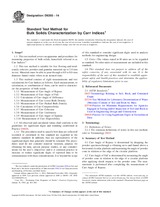
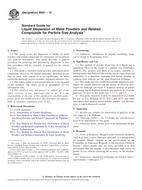 ASTM B821-10
ASTM B821-10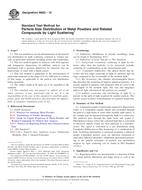 ASTM B822-10
ASTM B822-10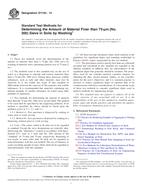 ASTM D1140-14
ASTM D1140-14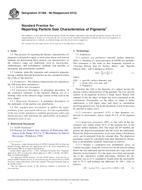 ASTM D1366-86(2012)..
ASTM D1366-86(2012)..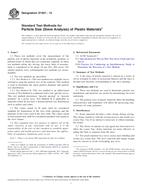 ASTM D1921-12
ASTM D1921-12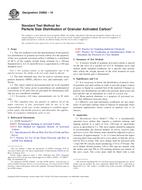 ASTM D2862-10
ASTM D2862-10
 Cookies
Cookies
